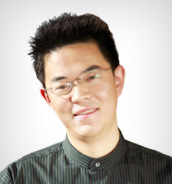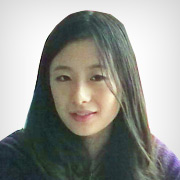這篇文章講的是應該如何區別對待感冒和流感。因為文章旨在向普通民眾傳播醫療知識,所以遣詞造句較為簡易,結構清晰易辨,理解的難度不大。
文章開篇指出兩點,一是感冒與流感有很多相似的癥狀(Scratchy throats, stuffy noses and body aches all spell misery),二是應當學會區分感冒和流感(may make a difference)。這兩點也是文章所述內容的綱領,后者是論述的側重點。
第二段引用醫療權威ALA的指導原則,指出區分普通感冒與流感的原因所在:辨別出是哪種疾病后可以立即進行相應的治療。對于流感來說,要馬上把醫生的藥房付諸實施(prescription drugs available for the flu need to be taken soon);對感冒來說,則要立即服用非處方藥(starts taking over-the-counter remedy)。
接下來的幾段從致病成因、預防手段、癥狀等方面介紹了感冒與流感的區別。
第三段講述了二者的致病因素,感冒源于二百多種病毒,而流感源于三種病毒。作者附帶講到流感的預防方法:接種疫苗(the flu can be prevented by the flu vaccine)。而普通感冒的預防方法則跳到了最后一段:frequent hand washing and avoiding close contact,勤洗手,不與感冒病人密切接觸。
四、五、六段介紹了感冒與流感在癥狀上的區別。第四段只起了承上啟下的作用,第五段詳細講解了二者的區別。第六段則指出一個特例:嬰幼兒和學齡前兒童的流感癥狀不易辨認。
第七段講的是治療方法,著重說明了治療禁忌:少年兒童不宜服用阿司匹林(should not take aspirin for pain relief)。
Passage Two
Questions 16 to 20 are based on the following passage.
In a time of low academic achievement by children in the United States, many Americans are turning to Japan, a country of high academic achievement and economic success, for possible answers. However, the answers provided by Japanese preschools are not the ones Americans expected to find. In most Japanese preschools, surprisingly little emphasis is put on academic instruction. In one investigation, 300 Japanese and 210 American preschool teachers, child development specialists, and parents were asked about various aspects of early childhood education. Only 2 percent of the Japanese respondents (答問卷者) listed “to give children a good start academically” as one of their top three reasons for a society to have preschools. In contrast, over half the American respondents chose this as one of their top three choices. To prepare children for successful careers in first grade and beyond, Japanese schools do not teach reading, writing, and mathematics, but rather skills such as persistence, concentration, and the ability to function as a member of a group. The vast majority of young Japanese children are taught to read at home by their parents.
In the recent comparison of Japanese and American preschool education, 91 percent of Japanese respondents chose providing children with a group experience as one of their top three reasons for a society to have preschools. Sixty-two percent of the more individually oriented (強調個性發展的) Americans listed group experience as one of their top three choices. An emphasis on the importance of the group seen in Japanese early childhood education continues into elementary school education.
Like in America, there is diversity in Japanese early childhood education. Some Japanese kindergartens have specific aims, such as early musical training or potential development. In large cities, some kindergartens are attached to universities that have elementary and secondary schools. Some Japanese parents believe that if their young children attend a university-based program, it will increase the children’s chances of eventually being admitted to top-rated schools and universities. Several more progressive programs have introduced free play as a way out for the heavy intellectualizing in some Japanese kindergartens.
16. We learn from the first paragraph that many Americans believe ________.
A) Japanese parents are more involved in preschool education than American parents
B) Japan’s economic success is a result of its scientific achievements
C) Japanese preschool education emphasizes academic instruction
D) Japan’s higher education is superior to theirs(C)
17. Most Americans surveyed believe that preschools should also attach importance to ________.
A) problem solving
B) group experience
C) parental guidance
D) individually-oriented development(B)
18. In Japan’s preschool education, the focus is on ________.
A) preparing children academically
B) developing children’s artistic interests
C) tapping children’s potential
D) shaping children’s character(D)
相關推薦:
專題:2008年12月英語四六級備考各題型專項突破 專家解析大學英語四級考試歷年閱讀真題(十一) 新東方:大學英語四級考試閱讀講義總結 實力加技巧 從兩個層面拿下英語四級閱讀理解














